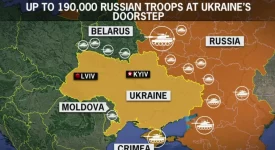The Eurozone economy is growing at an annualized rate of more than 2%, the fastest in more than six years and faster than the United States. Every Eurozone member country is growing across all sectors with intense manufacturing-and-services activity. Moreover, job creation is the strongest in almost ten years and joblessness has been falling rapidly inside and outside the Eurozone to 9.6%.
However, the positive economic indicators stand in a sharp opposition to the deep political crisis the European Union is in now. While European leaders and policymakers are suffering from a crisis of confidence, many Europeans believe that Brussels cannot take an effective action. On top of the intrinsic political crisis, there are many external pressures, such as the disappointment at the new US administration and refugee crisis coupled with numerous conflicts in the EU’s nearest neighborhood.
Amidst the political crises of all sorts, EU politicians, however, failed to notice that the biggest risk facing the Eurozone disappeared – deflation. For much of 2016, the European Central Bank was trying to stop the deflationary pressure and return inflation to its target of close to below 2%. Earlier this week, the European Commission published its annual analysis of the economic and social situation in the Member States including recommendations for the future – the so-called winter package. The Commission pointed out that, with its persistently high current account surplus, Germany could do more to help the Eurozone economy to recover.
This positive development has thus led Finance Commissioner Pierre Moscovici to comment that “over the past twelve months, many EU countries have made further – albeit not yet sufficient – progress in addressing their key economic challenges”. However, a number of economic risks remain. For example, there are still high current account surpluses and there still is major uncertainty regarding the next steps that President Trump is likely to take.







